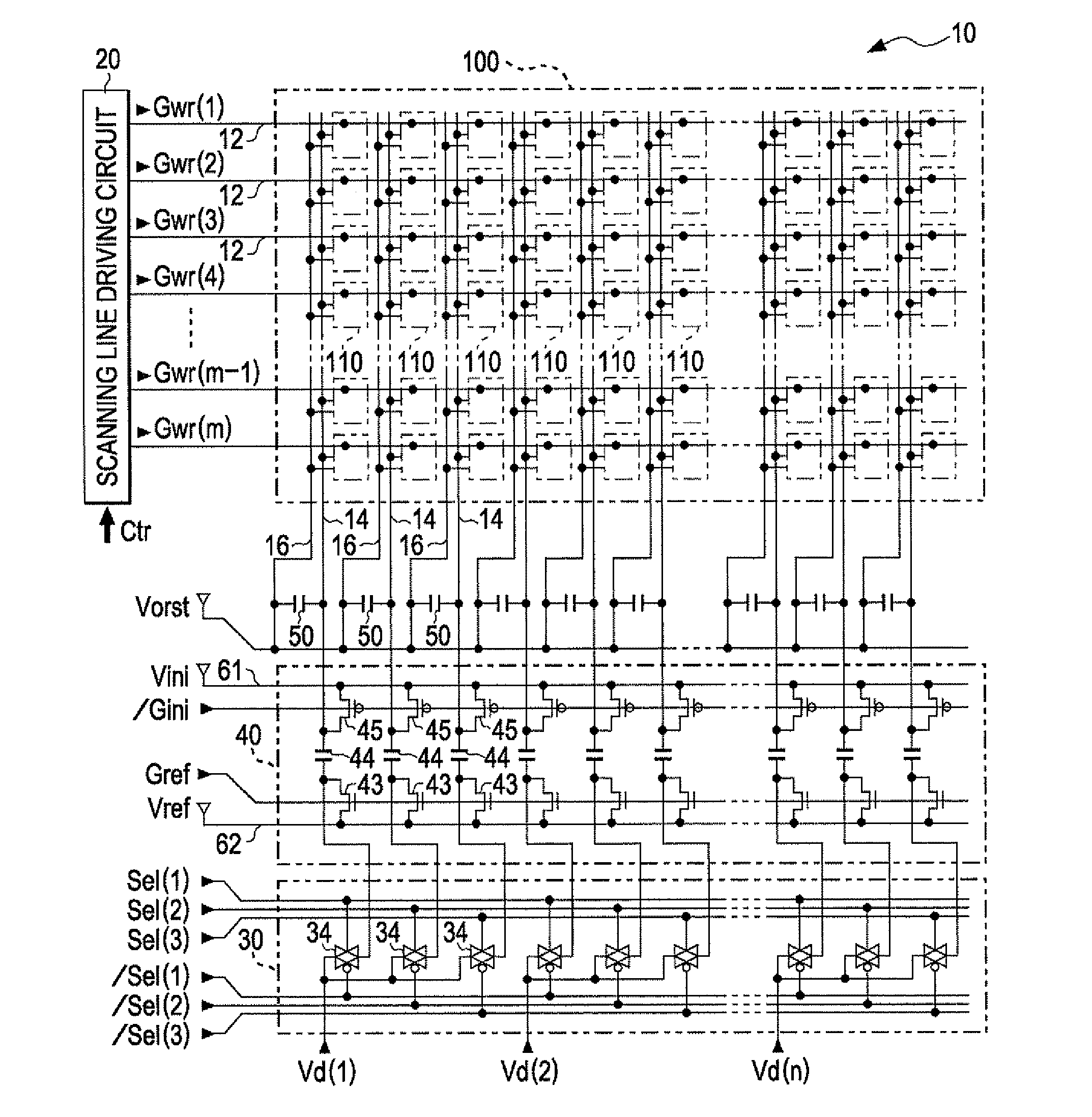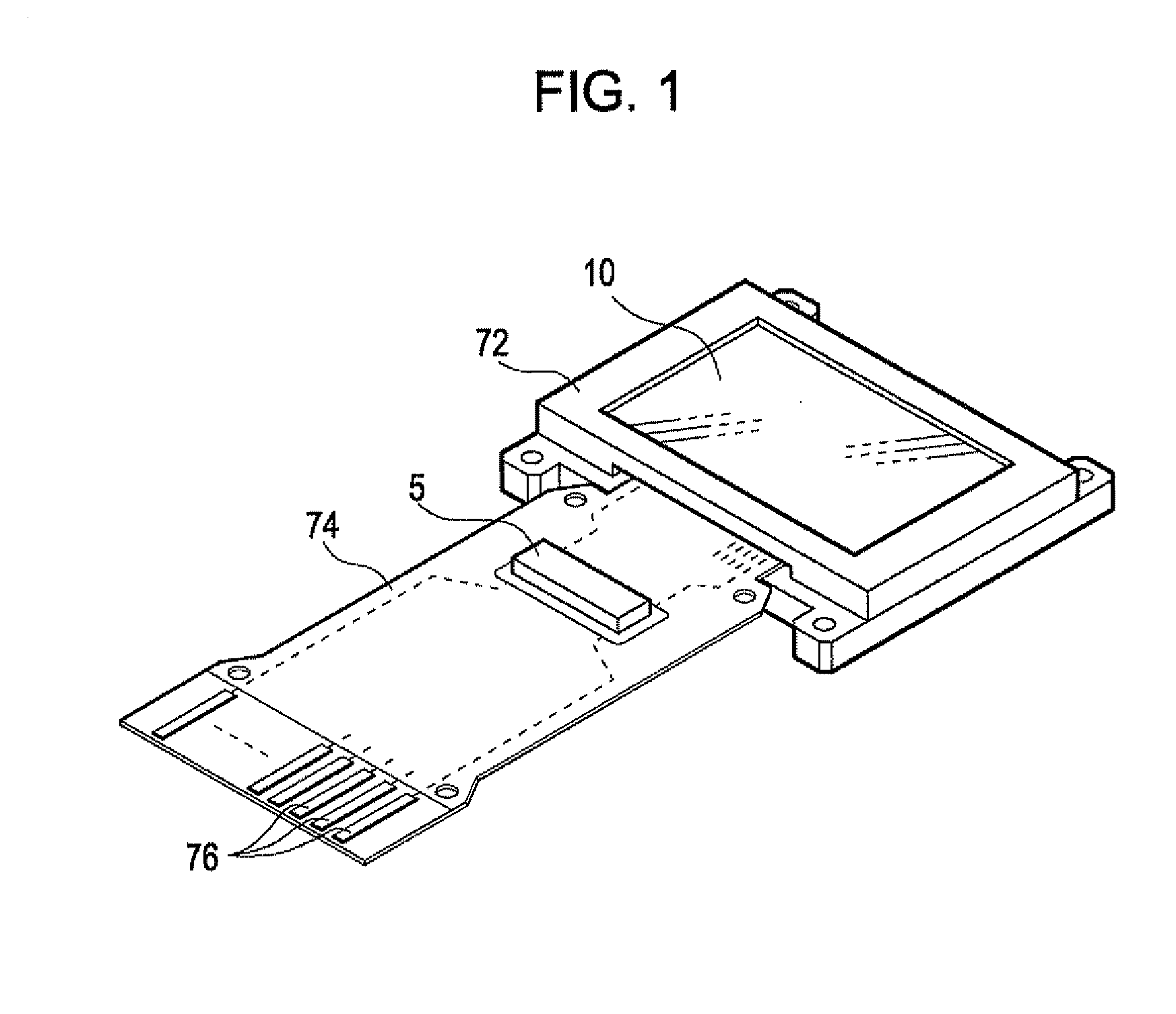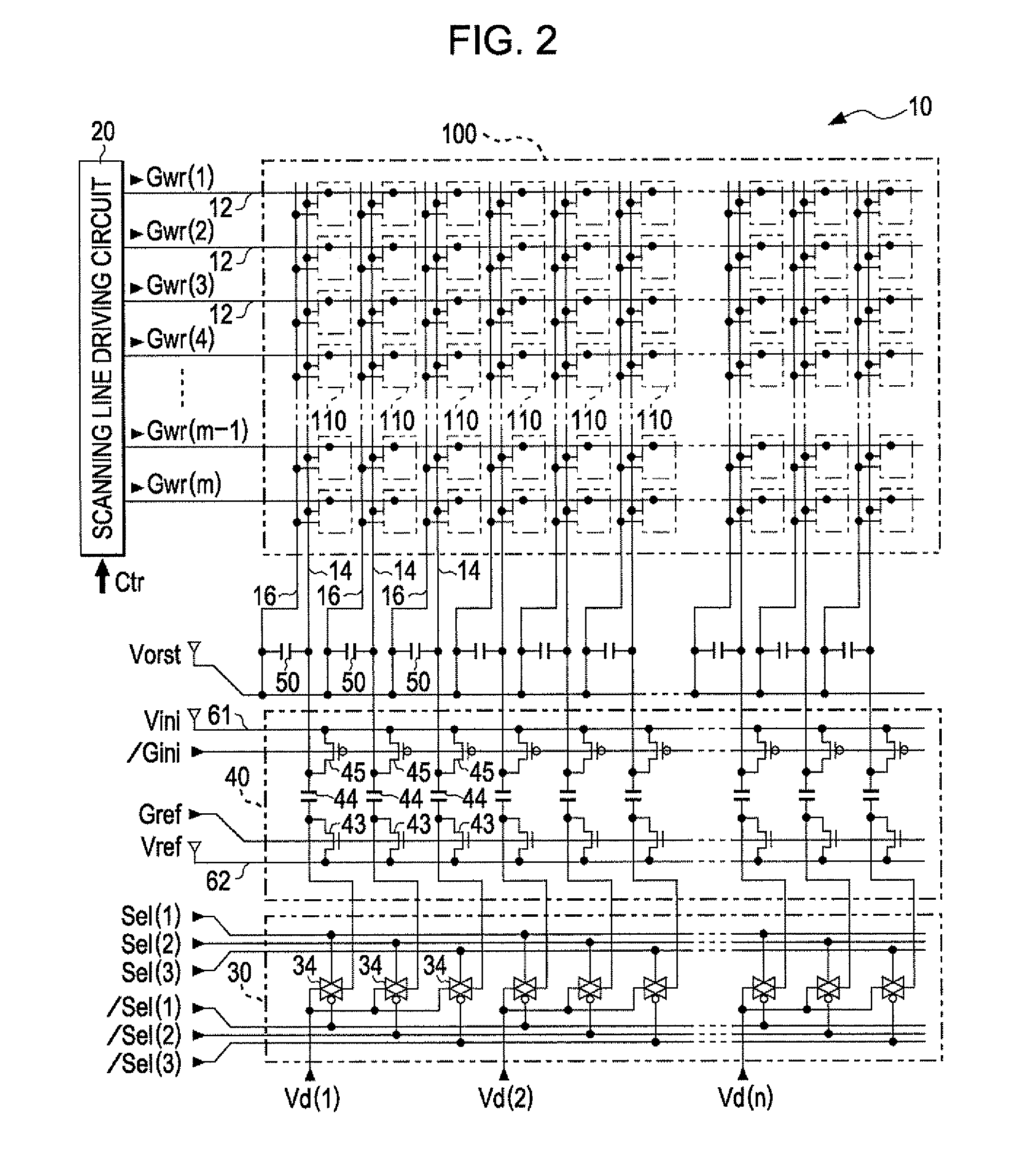Electro-optical device, driving method of electro-optical device and electronic apparatus
a driving method and electrooptical technology, applied in the direction of instruments, static indicating devices, etc., can solve the problems of difficult to output data signals with extremely fine precision, display non-uniformity, etc., and achieve the effect of high precision and fine precision
- Summary
- Abstract
- Description
- Claims
- Application Information
AI Technical Summary
Benefits of technology
Problems solved by technology
Method used
Image
Examples
first embodiment
Operation of First Embodiment
[0080]The operation of the electro-optical device 10 will be described with reference to FIG. 4. FIG. 4 is a timing chart for illustrating the operation of each part in the electro-optical device 10.
[0081]As shown in the drawings, the scanning signals Gwr(1) to Gwr(m) are sequentially switched to the L level and the scan lines 12 of rows 1 to m are scanned in order for each horizontal scanning period (H) in a period of one frame.
[0082]The operation in one horizontal scanning period (H) is common across the pixel circuits 110 of each row. Here, below, in the scanning period in which the i-th rows are horizontally scanned, description will be given of the operation with particular focus on the pixel circuit 110 of the i-th row, (3j−2)th column.
[0083]In the present embodiment, to make broad classifications, the scan period of the i-th row is divided into the initialization period shown by (b) in. FIG. 4, the compensation period shown by (c), and the writing...
second embodiment
Operation of Second Embodiment
[0134]The operation of the electro-optical device 10 according to the second embodiment will be described with reference to FIG. 12. FIG. 12 is a timing chart for illustrating the operation in the second embodiment.
[0135]As shown in the drawings, the point that the scanning signals Gwr(1) to Gwr(m) are sequentially switched to the L level and the scan lines 12 of rows 1 to m are scanned in order for each horizontal scanning period (H) in a period of one frame is the same as in the first embodiment. In addition, in the second embodiment, the point that the scanning period of the i-th row is made of an initialization period shown by (b), a compensation period shown by (c), and a writing period shown by (d) is also the same as the first embodiment. Here, the writing period of (d) in the second embodiment is a period from the time the control signal Gcpl changes from the L to the H level (when the control signal / Gcpl has become the L level) until the time ...
application and modification examples
[0171]The invention is not limited to the embodiments described above or the embodiments and the like of application examples, and, for example, various kinds of modifications as described below are possible. In addition, the forms of the modifications described below can be arbitrarily selected or a plurality thereof can be combined.
[0172]Control Circuit
[0173]In the embodiments, the control circuit 5 for supplying a data signal is separate from the electro-optical device 10; however, the control circuit 5 may be integrated into the silicon substrate along with the scanning line driving circuit 20, the demultiplexer 30, and the level shift circuit 40.
[0174]Substrate
[0175]In the embodiments, a configuration was adopted in which the electro-optical device 10 was integrated with a silicon substrate; however, a configuration of being integrated with another silicon substrate may be adopted. Further, the forming may be made in a glass substrate or the like by the application of a polysil...
PUM
 Login to View More
Login to View More Abstract
Description
Claims
Application Information
 Login to View More
Login to View More - R&D
- Intellectual Property
- Life Sciences
- Materials
- Tech Scout
- Unparalleled Data Quality
- Higher Quality Content
- 60% Fewer Hallucinations
Browse by: Latest US Patents, China's latest patents, Technical Efficacy Thesaurus, Application Domain, Technology Topic, Popular Technical Reports.
© 2025 PatSnap. All rights reserved.Legal|Privacy policy|Modern Slavery Act Transparency Statement|Sitemap|About US| Contact US: help@patsnap.com



